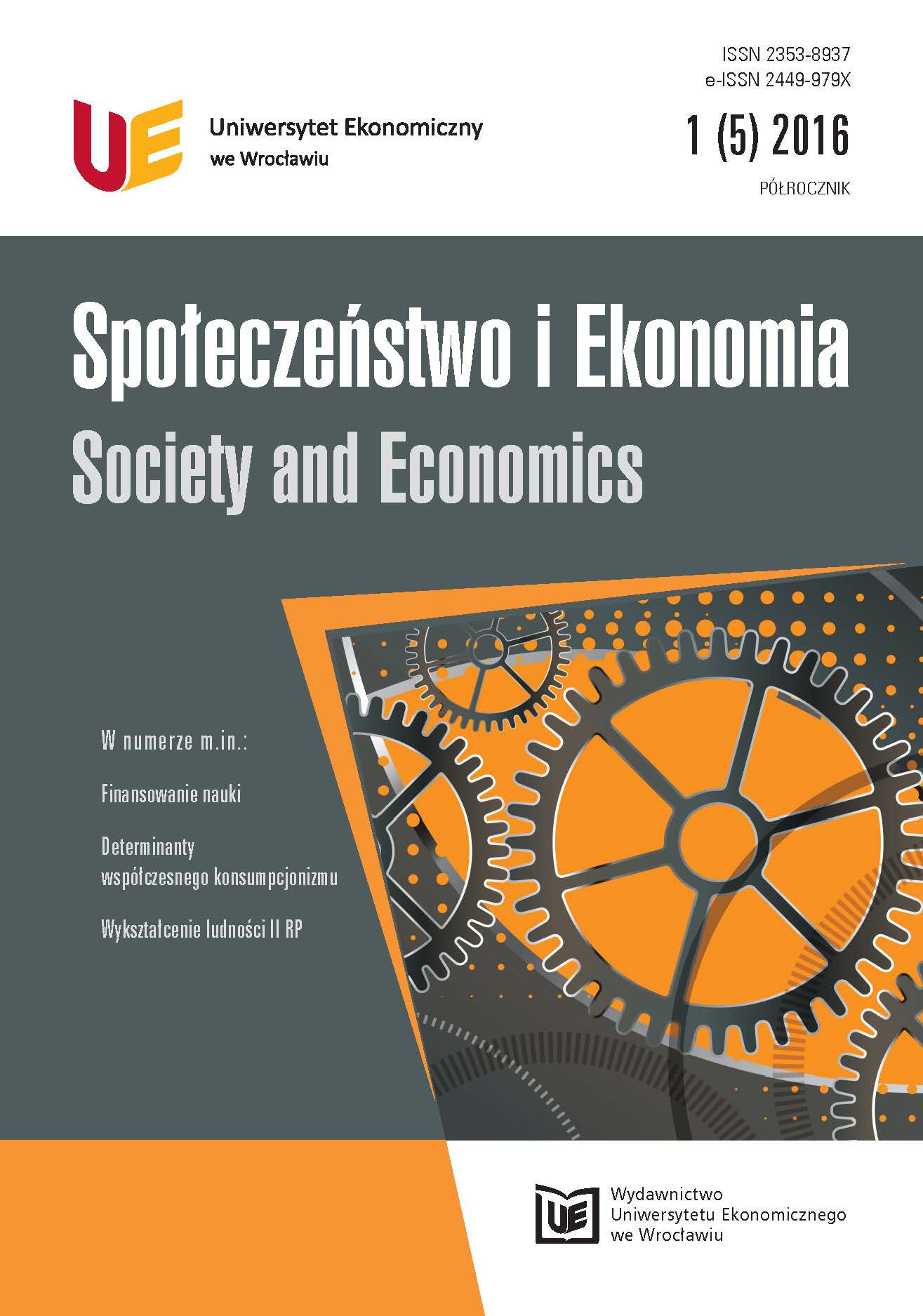Wykształcenie ludności II Rzeczypospolitej w świetle badań GUS
Education of population of the Second Polish Republic in the light of research by CSO
Author(s): Piotr StańczykSubject(s): Social Sciences, Economy, Education, Sociology
Published by: Wydawnictwo Uniwersytetu Ekonomicznego we Wrocławiu
Keywords: the Second Polish Republic; education; level of education; illiteracy; national population census
Summary/Abstract: The article presents diverse structures of the population of Poland in the interwar period according to the level of education (including literacy and numeracy) due to gender, religious denomination and residence. The results of the population census from 1921 and 1931 were the main source of data. In the light of the empirical evidence it was stated that primary education (in total 37.5% of the general population at the age of 15 years and more) had had a dominant position in the population structure and people with a higher level of education 0.7% (1921). In the period of the Second Polish Republic the education process was selective on the grounds of gender and religious denomination; men were better educated than women. Evangelical Church members were best educated and Orthodox Church worst. As a result of a big diversity of parts of Poland with respect to the degree of the implementation of public education there was a big disproportion between regions in Poland in the level of education and the structure in terms of education (among others in the level of illiteracy). There was a big educational gap in the eastern regions and the best situation in this regard was observed in western voivodeships.
Journal: Społeczeństwo i Ekonomia
- Issue Year: 2016
- Issue No: 05
- Page Range: 7-26
- Page Count: 20
- Language: Polish

